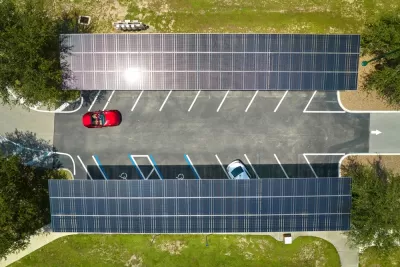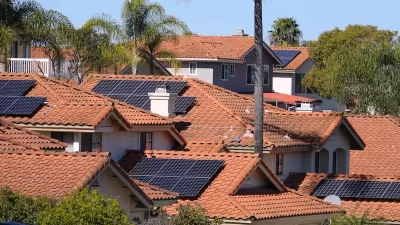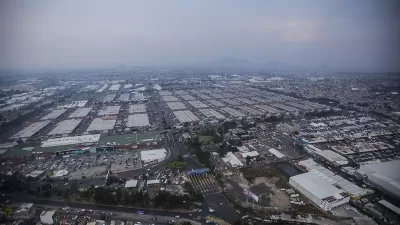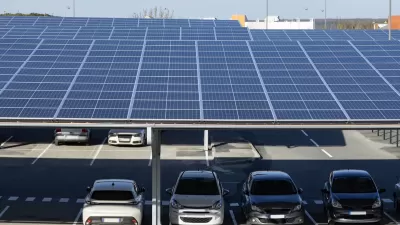Placing solar panels over parking lots has multiple benefits, but higher costs have prevented their widespread adoption in U.S. cities.

“We need to rapidly transition away from fossil fuels to avoid the worst effects of global warming. And, as extreme weather becomes more common, shade and shelter from downpours would be a welcome development for drivers,” writes Andrew Block for CNET. So why isn’t every outdoor parking space covered by solar panels?
Parking lot solar is becoming more common in some parts of the United States like the Southwest, but there are some challenges in retrofitting existing parking lots with solar canopies. According to Tim Powers of Inovateus Solar, “A carport is roughly 40% more expensive compared to a ground mount system.” But carports provide an extra service and can help institutions and businesses with large parking lots lower their carbon footprint. At Michigan State University, 5 percent of campus energy consumption is powered by parking lot solar panels. And it made use of existing development, preserving existing farmland. “Michigan State's installation kept 45 acres of agricultural land in production, a fact Michigan State called out in promoting one of the several awards it won for the array.”
Carport solar could also power electric vehicles, industry experts add. For example, “An average Walmart parking lot could support about 100 electric vehicle chargers if covered in solar panels, Pearce's research found.” Ultimately, while carport solar installations aren’t the most cost-effective way to install solar, they can be a useful solution where land is scarce. Last year, France passed a law requiring solar panels over most parking lots in the country by 2028.
FULL STORY: Why Isn't Every Parking Lot Covered With Solar Panels?

Alabama: Trump Terminates Settlements for Black Communities Harmed By Raw Sewage
Trump deemed the landmark civil rights agreement “illegal DEI and environmental justice policy.”

Study: Maui’s Plan to Convert Vacation Rentals to Long-Term Housing Could Cause Nearly $1 Billion Economic Loss
The plan would reduce visitor accommodation by 25% resulting in 1,900 jobs lost.

Planetizen Federal Action Tracker
A weekly monitor of how Trump’s orders and actions are impacting planners and planning in America.

Wind Energy on the Rise Despite Federal Policy Reversal
The Trump administration is revoking federal support for renewable energy, but demand for new projects continues unabated.

Passengers Flock to Caltrain After Electrification
The new electric trains are running faster and more reliably, leading to strong ridership growth on the Bay Area rail system.

Texas Churches Rally Behind ‘Yes in God’s Back Yard’ Legislation
Religious leaders want the state to reduce zoning regulations to streamline leasing church-owned land to housing developers.
Urban Design for Planners 1: Software Tools
This six-course series explores essential urban design concepts using open source software and equips planners with the tools they need to participate fully in the urban design process.
Planning for Universal Design
Learn the tools for implementing Universal Design in planning regulations.
Caltrans
Smith Gee Studio
Institute for Housing and Urban Development Studies (IHS)
City of Grandview
Harvard GSD Executive Education
Toledo-Lucas County Plan Commissions
Salt Lake City
NYU Wagner Graduate School of Public Service





























